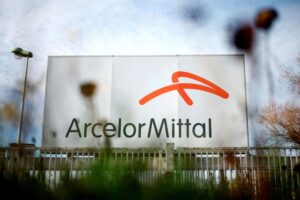The European Steel and Metals Action Plan: A New Dawn for Europe’s Industry
In a bold move to bolster the struggling steel sector, the European Commission has unveiled its Steel and Metals Action Plan, a crucial element of the EU’s Clean Industrial Deal. This initiative aims to enhance competitiveness amid escalating import tariffs from the U.S. and the challenges posed by cheap imports, particularly from China. The steel industry, a cornerstone of Europe’s economy, now faces the dual pressures of global competition and environmental accountability, making this action plan imperative.
Understanding the Stakes
European steelmakers have long expressed concern over the influx of inexpensive steel from China, which has been alleged to distort the European market. With U.S. tariffs on steel and aluminum imports, there is a looming threat of surplus steel being redirected towards Europe, potentially flooding the market and exacerbating the already precarious situation for local producers.
As we analyze the implications of this action plan, it becomes clear that its success hinges not only on defensive measures against unfair trade practices but also on fostering a sustainable framework for growth and decarbonization.
Industry Reactions to the Action Plan
ArcelorMittal’s Perspective: CEO Aditya Mittal emphasized the urgency of addressing trade defense mechanisms, acknowledging that the plan recognizes critical issues such as the Carbon Border Adjustment Mechanism loopholes and the soaring energy costs that hinder decarbonization efforts. ArcelorMittal urges the European Commission to act swiftly to eliminate unfair trade practices that threaten the industry’s future.
Thyssenkrupp’s Standpoint: Another key player, Thyssenkrupp Steel Europe, has hailed this action plan as a groundbreaking measure aimed at ensuring both competitiveness and decarbonization. They underscore the prioritization of trade protection, which is essential in an environment plagued by global overcapacity and aggressive trade practices.
Aperam and Outokumpu’s Recommendations: Luxembourg-based Aperam has echoed calls for long-term protective measures that address excess steel production from Asia, particularly when current safeguards expire in June 2026. Similarly, Outokumpu, a Finnish stainless steel producer, highlights the need for the action plan to propel timely and decisive measures against global market distortions.
Hydro’s Concerns: Norwegian aluminium producer Hydro warns of potential dumping due to increased tariffs on aluminium, which may lead the EU to implement safeguard measures for this commodity as well. This could create further complications for the European metals industry if not addressed appropriately.
Key Insights from the European Steel Association (EUROFER)
Dr. Henrik Adam, President of EUROFER, articulated that a robust European steel industry is critical for a strong EU. He called for action on various fronts, from tackling unfair trade to closing loopholes in existing mechanisms, and emphasized the importance of recognizing the strategic value of steel scrap in a circular economy.
Market Analysis and Future Outlook
Analysts, including Maxime Kogge from Oddo BHF, have pointed out that while the commitment to a stronger structural response is encouraging, the details of the implementation will remain somewhat vague until 2025. Moreover, the responsibility lies heavily in the hands of EU member states, which may prioritize other issues in a fluctuating economic landscape.
At Extreme Investor Network, we understand that the long-term viability of the European steel and metals industry will depend on coordinated action across member states, effective regulatory measures, and strategic investment in innovation and sustainable practices.
The Road Ahead
As the action plan unfolds, the European Commission must translate high-level strategies into effective policies that directly address the immediate challenges while paving the way for future growth. The imperative for rapid response is clear: to secure the industry’s future through competitive practices, innovative solutions, and a commitment to sustainability.
A thriving steel sector is not merely a matter of economic stability; it is essential for the overarching goal of EU environmental targets and a circular economy. The newly proposed plan, if executed effectively, may very well set a precedent for other industries as Europe strives to balance competitiveness with climate responsibility.
Stay tuned as we continue to monitor the developments surrounding the Steel and Metals Action Plan, and explore what it means for investors and stakeholders in the industry.
Feel free to customize further or add any specific insights or calls to action from Extreme Investor Network that you might want to highlight!

